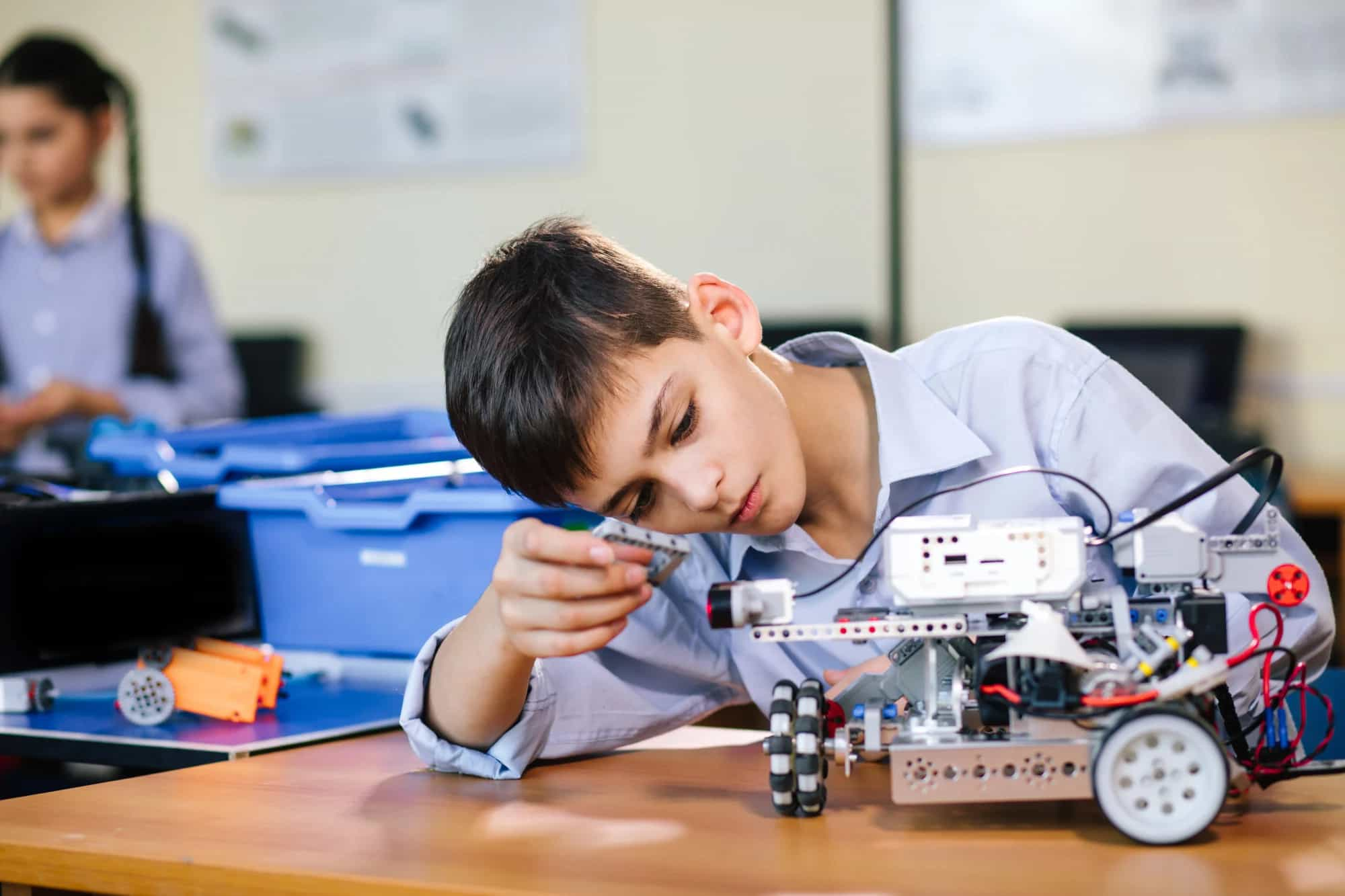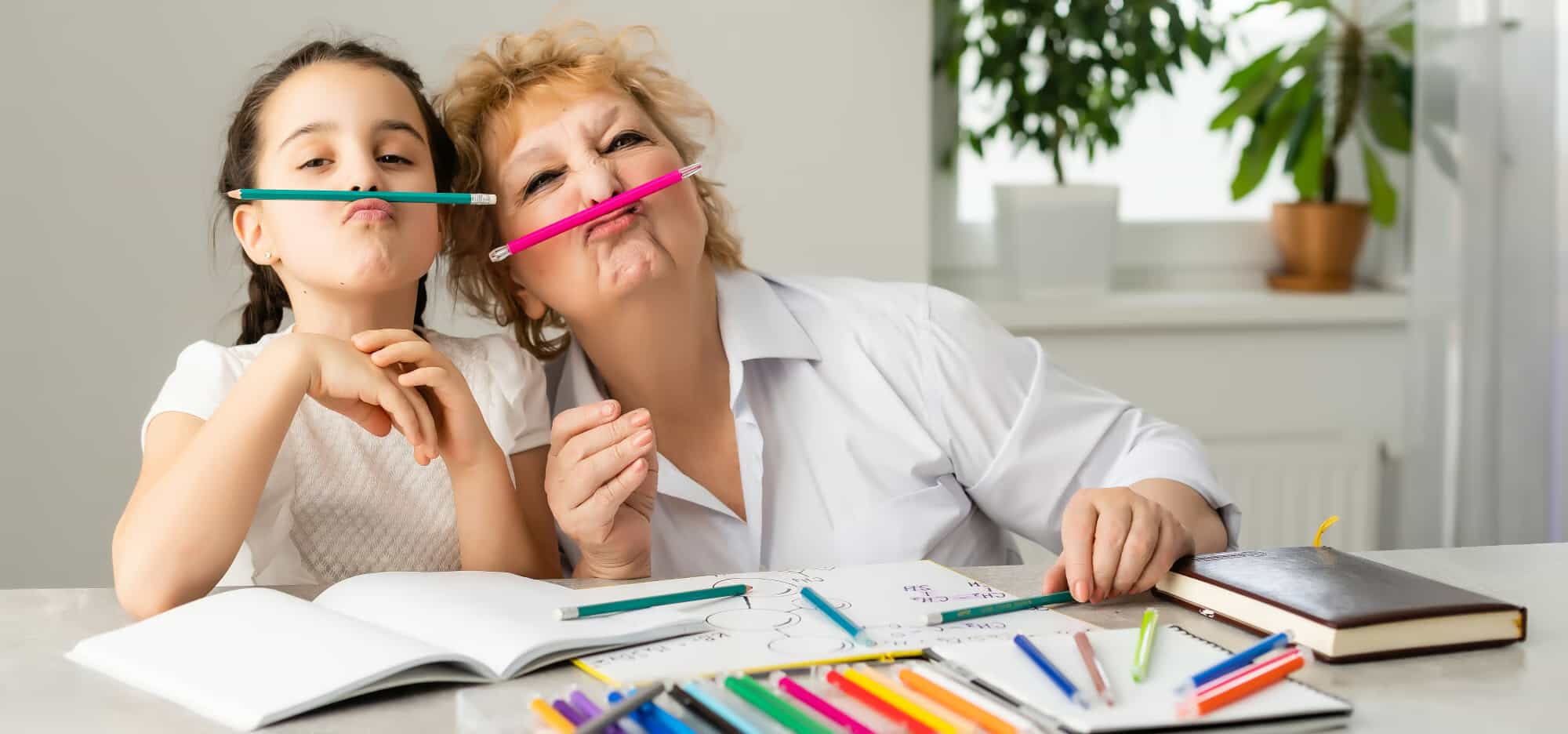Creating the Perfect learning space for a child: 6 practical tips to follow
Optimising the learning environment is one of the most impactful ways to bolster a child’s educational journey. Educators, parents, and school administrators are increasingly recognising the influence a well-crafted learning space can have on a child’s focus, creativity, and overall academic performance. In a world where learning environments are rapidly transitioning to mentor digital integration, creating spaces that inspire and engage has become essential.
This guide will explore six practical strategies for constructing the ideal learning area within a school. From the subtleties of lighting to the complexities of technology integration, these tactics will set a foundation for a space where children can grow intellectually and personally.

1. Adequate Lighting
Lighting plays a pivotal role in concentration and mood. In the context of learning, it can enhance or detract from a student’s ability to focus. Natural light is a preferred source for its health benefits and ability to regulate the body’s internal clock, but well-calibrated artificial lighting can be a reliable supplement.
Natural Light vs. Artificial Lighting
Natural light, characterised by its dynamic qualities, provides students with a connection to the environment outside. However, overcast days and winter months can limit its availability. In the absence of natural light, full-spectrum lighting can simulate its effects, providing consistent and high-quality illumination that supports overall well-being.
Importance of Proper Illumination for Focus
Improper lighting can lead to eyestrain and fatigue, which hinders the learning process. The right light levels and colour temperatures are essential for maintaining alertness. Instructors should consider adjustable fixtures that allow for control over these variables, especially when teaching diverse subjects and activities.
2. Ergonomic Furniture
The furniture in a learning space should not only be functional but also promote health and comfort for extended periods of study. Ergonomic furniture is designed to support the body in a neutral position, reducing stress on muscles and joints.
Choosing Suitable Desks and Chairs
Desks and chairs should be adjustable to accommodate a range of student heights and body types. It is recommended to select chairs with lumbar support and desks of an appropriate height to avoid hunching or reaching.
Some schools are even experimenting with standing desks to encourage movement and reduce sedentary behaviour. And, as school tables are available in a range of different shapes and sizes, just look for a shape that allows the students to move around and interact with each other when working together. That way, students have the option to work in groups or individually.
Supporting Posture and Comfort for Extended Study Sessions
Good posture is critical for maintaining energy levels and attention. By investing in furniture that allows for customisable settings, each student can create an environment that is tailored to their individual needs, thereby minimizing discomfort and distraction.
3. Organisational Tools
An organised space is a productive space. Adequate storage and organisational tools help maintain order and make resources more readily accessible, which can in turn increase efficiency and reduce stress.
Storage Solutions for Books, Supplies, and Materials
Cubbies, lockers, shelving units, and desks with built-in storage compartments can all contribute to a tidy learning environment. When everything has its place, students and teachers can quickly locate materials without the frustration often associated with clutter.
Promoting Tidiness and Accessibility
Visible clutter can be a significant source of distraction. Implementing organisational systems that are easy to use and maintain can help schools reinforce the value of keeping a clean and tidy space, a habit that young learners can apply to other areas of their lives.
4. Personalisation and Inspiration
A touch of personalisation goes a long way in creating a learning space that feels inviting and warm. Student artwork, inspirational quotes, and displays of academic achievement serve as tangible reminders of progress and potential.
Adding Personal Touches and Motivational Elements
Allowing students to contribute to the decoration of their learning space can foster a sense of ownership and pride. Encouraging personalisation within predefined guidelines can also help students express themselves in a way that is both individual and respectful of the shared space.
Stimulating Creativity and Engagement
Inspirational elements, such as posters, banners, and thematic displays, can inject an air of excitement and wonder, which is particularly important for igniting the imagination and motivation that are integral to the learning process.
5. Technology Integration
Educational technology has the power to revolutionize learning. However, a balanced approach is essential to avoid overstimulation and ensure that technology serves as a tool, rather than a distraction.
Balancing Screen Time with Educational Tools
Screen time can have both positive and negative implications for young students. It’s important to incorporate technology with curative intent, choosing platforms and applications that are interactive, educational, and aligned with learning objectives.
Incorporating Devices for Interactive Learning
Tablets, laptops, and interactive whiteboards can encourage active participation and a dynamic approach to education. By facilitating access to digital resources, these devices can bring the outside world into the classroom, expanding the horizons of students.
6. Multi-Functional Space
Few learning activities are static; the modern classroom should follow suit. Creating a multi-functional space that can be adapted to different teaching methods can allow schools to optimize the use of their learning environments.
Flexible Layouts for Different Activities
Modular furniture, movable walls, and simple reconfiguration techniques can transform a classroom from a lecture hall to a collaborative work area or even a performance stage. A variety of seating options, such as bean bags, stools, or cushions, can accommodate different learning styles and activity types.
Maximising the Use of the Learning Area
A space that can swiftly adjust to the changing needs of a lesson or group can facilitate seamless transitions and maintain a high level of engagement. This adaptability also future-proofs the classroom, enabling it to evolve along with teaching methodologies and technological advancements.

The construction of the perfect learning space is as much an art as it is a science. It requires a deliberate combination of elements that cater to students’ physiological, psychological, and intellectual needs. These six tips are a starting point for creating an environment that fosters growth, learning, and the development of well-rounded individuals.
As educators and administrators, the challenge is to continually evaluate and improve these spaces, adapting them to the changing needs and technologies that define our educational landscape. The payoff, however, is immense, a generation of students who are not only academically successful but also deeply connected to the joy of learning.
![[AD] We went to the newly opened Cha Sha Kingston a couple of weeks ago, and wow — taste bud adventure unlocked! The boys devoured the masala fries and chicken tikka rolls, while we couldn’t get enough of that epic kebab butter curry 😍🍛.
It’s amazing value for food this tasty (and everyone left happy and VERY full!).
Delicious food, vibrant vibes and incredible value — the perfect combo for your next meal.
📍Cha Sha Kingston
43 Surbiton Road, KT1 2HG
🌐 chasha.co.uk
Other Cha Sha locations in Birmingham, Ilford, Southampton and Wembkey
#ChaSha #ChaShaKingston #KingstonEats #FoodieFinds #UKFoodie #FoodReview #KingstonUponThames #FamilyEats #FamilyDining #FoodieKids](https://suburban-mum.com/wp-content/uploads/2016/02/574770541_18560351146016840_6855048070839528040_n-180x320.jpg)

![[AD] We’re a cricket-mad family, so we’re buzzing that @thehundred is back this August! 🏏🔥
To get ready, M tried out the official FREE Activity Pack — and it’s brilliant! 🙌
Packed with fun games, creative challenges and sporty tasks, it’s perfect for getting kids hyped whether you’re at home or on the go.
👉Download yours now (link in bio)
@londonspirit @ovalinvincibles #EveryMomentCounts #TheHundred
#EnglandCricket #CricketFamily #TheHundredCricket #LondonBloggers #Cricket #CricketIsLife #kidsfun](https://suburban-mum.com/wp-content/uploads/2022/11/505472555_18531279601016840_7092520074819907569_n-180x320.jpg)



![[AD - Press visit]
We enjoyed the glorious sunshine this weekend with a trip to Brighton. We went on the @brightoni360official which is right by the sea front.
The i360 pod take a slow journey up, allowing you to take in views across Brighton and the South Downs 450ft above ground. There’s a bar inside with drinks and snacks available to purchase and the experience lasts 25 minutes.
Afterwards, we headed to the open air roller rink for a roller skating session!
The roller rink is:
⭐ Suitable for over 5s
⭐ £6.50 if you have your own skates or £9.50 if you need to hire them
⭐ 45 minutes per session
Full details to visit the i360 + skating
📍 Brighton i360, Lower Kings Road, Brighton BN1 2LN
🚗 Parking nearby (we parked in the Regency Square Car park)
🎟️ Prices start from £25.40 for an adult and £16.90 for a child
🕐 Opening hours are currently Sun-Fri 10.30am-18.30pm and until 19.30pm on Saturdays
☕️ Bar inside the i360, cafe and gift shop
Book tickets here:
https://tickets.brightoni360.co.uk/tickets/?_ga=2.195305772.1869001490.1689671753-1757164059.1689671753/#events?eventid=157](https://suburban-mum.com/wp-content/uploads/2015/04/417980235_313576471048632_3682382982231216432_n.jpg)

![[AD] ***Summer of fun at Barracudas Activity Camps!****
There is plenty for kids to do at @barracudas_activity_day_camps
From Tennis, Archery, Swimming, Motor Sports and more you can be sure that there will be something for kids aged 4.5-14. ⚽🏈🥅🎾🏓🏎️🏹🏊♂️🏉
You can book on a day by day basis - so it can fit in with any other days out/activities you have planned and there are early drop off and late pickup options available. Barracudas are also Ofsted registered so you can use your Childcare Vouchers too.
⭐⭐⭐Get £20 off a week or £4 off a day using my discount code: MARIA20⭐⭐⭐
#BarracudasActivityDayCamp #BarracudasActivityCamp #BarracudaAmbassadors #SummerHolidays #SchoolHolidays #Summer2023 #SummerCamp #DayCare #Camp #KidsCamp #surreymummy #surreymums #SummerOfFun #ActivityCamps #HolidayCamps #Childcare #SchoolHolidays #schoolholidaycamps](https://suburban-mum.com/wp-content/uploads/2024/07/353583570_625625966167953_545896259645102575_n.jpg)



![[AD] We have some super exciting news...we have been chosen to be Laser Quest Ambassadors, and the boys are over the moon!
We are really lucky that our local Laser Quest (@laserquestkingston) is just around the corner from us. It means we can pop in of a weekend or anytime during the school holidays, and with summer just around the corner, I know Laser Quest will be one of our go-to places for some family fun.
As well as games of Laser Quest, there are also VR experiences and arcade amusements too. To find out a bit more about how Laser Quest works, you can read my blog post: https://www.suburban-mum.com/laser-quest-kingston/ (clickable link in bio)
Don't forget to keep an eye out for our Laser Quest posts - I'm going to be giving away two family passes to use at Laserquest Kingston!
If you can't wait and want to head down to Laser Quest to try it out, use the code SUMMER30 for 30% off your booking. The code is valid from now until the end of August 2023 and can be used on Laser Quest games and birthday party bookings.
#LaserquestAmbassador #Laserquest #LaserquestKingston #ActivitiesForKids #FamilyFun #DaysOutWithKids #Lasertag #LaserquestVR #Kingston #ThingsToDoInKingston #SurreyFamilyDaysOut #ThingsToDoWithKids #RainyDayFun #SurreyMummy #SurreyLife #LifeWithKids #LifeWithBoys #familyfunday](https://suburban-mum.com/wp-content/uploads/2015/04/353230107_797358078406942_2405522556733455165_n.jpg)

![[AD] The sun has finally made an appearance and the boys have been making the most of it by spending it
in the garden.
They’re go-to is always football and they’ve been trying to improve their aim and accuracy with the new Messi Foldable Footlball goal from the #MessiTrainingSystem range.
I love the fact the goal is foldable, making it easy to store away when not in use. It is also lightweight so you can effortlessly pack it up and take it to the park or to a friend’s house.
The Messi Foldable Football Goal retails at £36 and can be purchased from @argos
You can read my full review here: https://www.suburban-mum.com/messi-foldable-football-goal/
#TrainLikeMessi #FoldableFootballGoal #FootballSkills #OutdoorFun #LionelMessi #LeoMessi #FootballAtHome #OutdoorKids #JustGetOutside #OutdoorsAndFree #ScreenFreeKids #WhateverTheWeatherKids @flair_gp](https://suburban-mum.com/wp-content/uploads/2015/04/341194882_615024710178056_41977149395989448_n.jpg)

![[AD] We are absolutely thrilled to announce that we are Barracuda Ambassadors again this year.
With Easter just around the corner, the boys were sent the @barracudas_activity_day_camps new camp kit in preparation for the school holidays.
There’s a wide range of activities for kids aged 4.5 - 14 including Tennis, Archery, Basketball, Arts & Crafts and more.
If you like the sound of Barracudas, find out more over on their website. You can also save £20 a week or £4 a day, using my discount code: MARIA20](https://suburban-mum.com/wp-content/uploads/2024/07/336812306_765234558514317_685553691647241974_n.jpg)


![[AD - Gifted]
Last weekend we were invited to try out @tsarettaspice’s new Bottomless Brunch menu and I can tell you it was thumbs up all round!
There’s a good choice tapas on offer from Punjabi fish fingers, Indo Chinese Chicken to Spiced Lamb Scotch Eggs and Manchurian Cauliflower (which was amazing!)
If you’re local to Twickenham and fancy giving them a try here’s are the details.
Tsaretta Spice Bottomless Brunch
⭐️£37.50 per head for bottomless Prosecco or cocktail of the day
⭐️£55 per head for bottomless Champagne
⭐️ Food included: 4 tapas selections and dessert or 2 tapas selections, a pav or naanwich and dessert
⭐️ Non-alcohol brunch is also available
Tsaretta Spice
55 Church Street
Twickenham
TW1 3NR
You can also read our full review over on the blog (link in bio)](https://suburban-mum.com/wp-content/uploads/2024/07/334565436_5960402314015030_663031098700829518_n.jpg)



